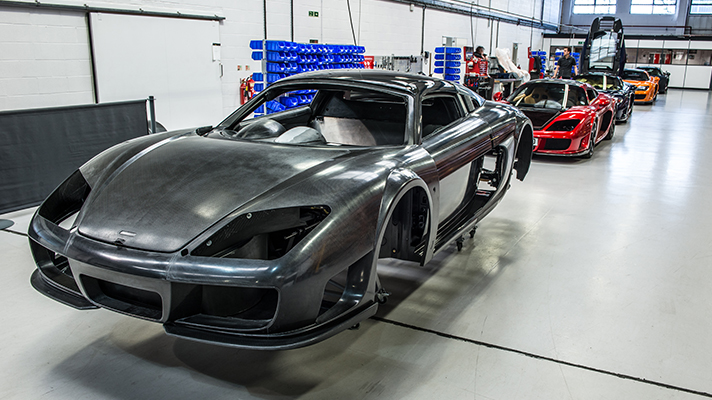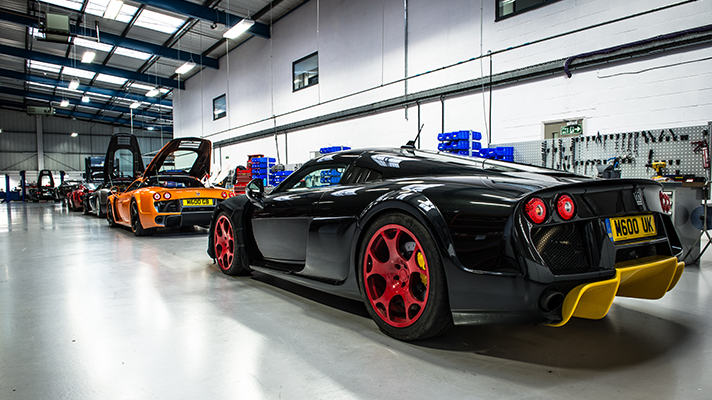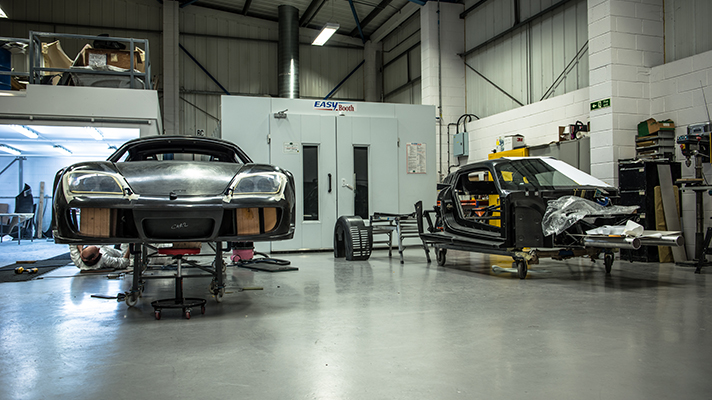
How to make a Noble M600 European
That chunk of carbon above is a freshly baked and birthed Noble M600. Looks the same as all the other M600s you've seen, right? Wrong. By the time it rolls off the production line, there'll be literally thousands of changes compared to the ones you've seen before. These changes have cost Noble more than £300,000 and a year's worth of head scratching, but you'd be hard-pressed to even notice them.
Why would a company invest so much time and money into changes that make hardly any difference to the way it looks, and for a car it has only made a dozen of? Because it's the length that this British supercar manufacturer has had to go to make it eligible for sale in Europe. Once there, Noble can sell it into 27 more countries and potentially double the production capacity.
Up until now, M600s have been road legal thanks to the Individual Vehicle Approval (IVA) scheme. Unlike other manufacturers who have hundreds of staff and loads of cash to throw at a new car, Noble's team numbers just 12. But wanting to mix with the big boys, it went above and beyond what it needed to do to pass initial IVA tests for the 2011 production car, most notably crash testing the car, and doing a 24-hour non-stop high-speed endurance test around Bruntingthorpe Aerodrome.
However, the drawback is that IVA testing only allows the cars to be sold in the UK. That's why Noble took the decision to make it European, which meant reading pages and pages of rules and regulations and entering a game of engineering Buckaroo.
The European rules are very stringent. And as soon you change one thing on the car to abide to the regs, you have to move, make or support something else which can completely differ the dynamics, look and feel of the car - something that Noble wanted to avoid as much as possible. This also adds time and money. And considering it costs £125K in paperwork alone to make a car EU spec, they wanted to nail the changes first time around. But having no experience in doing this, no IKEA-style flat-pack instructions to follow and only one consultant and two engineers to make the necessary changes, Noble had to be like the automotive Happy Gilmore and make a hole-in-one every single time. They didn't hit it on every go, either...
One of the biggest problems was with the lights. If you click through the gallery, you'll see it's the most visual change on the car. To comply with European regs, the high beam had to move and daytime running lights had to be added. But this meant they had to source a new sidelight and shuffle them all around to keep the distances between the lights correct. It's intricate stuff. And then the indicator had to be scalloped to allow the right amount of light out of the side. Then it had to be flown to Italy, sprayed with all kinds of chemicals and tested to see if it passed. It didn't. So the work had to be modified and the process had to be repeated. You can see why this gets frustrating.
Aside from the lights, the other biggest challenge was to quieten the M600. Not an easy task when you've got a car with a 650bhp, Yamaha-sourced twin-turbo 4.4-litre V8, boasting a better power-to-weight ratio than a Bugatti Veyron. They had to reduce the ‘drive-by-noise' from 99db to 75db, a task Noble's engineers described as ‘Herculean'. The solution was to lengthen the exhaust, then fold it back over itself like - much like a motoring large intestine - and then apply soundproofing in the arches. So if you knock on the rear arches of an old, IVA-spec M600, it'll sound hollow, because there's less exhaust stuffed underneath. That's a Top Gear Top Fact.
But it's the smaller changes which are every engineer in the world's - aside from James May, that is - nightmare. Previously, every switch on the Leicestershire supercar was written out in plain English. If you wanted to turn the lights on, you'd hit the switch that said ‘LIGHTS'. Annoyingly, not everyone in Europe speaks English. So Noble had to change every single switch inside the car to European-friendly symbols. Have a look inside your own car at the number of symbols, and you'll soon realise how much hassle that is.
The door cards had to be modified so that the door pull was recessed and the edge of it was a bit smoother, something that required re-tooling. As did re-styling the rear windscreen so it didn't reflect as much as it used to. And while these changes were being made, someone was upstairs reading through close to 50 regulations just so they knew where your rear numberplate could go. Sounds like madness doesn't it? But it gets worse. EU cars have to be able to do an emergency lane changing manoeuvre at 80 per cent of their top speed... with no power steering. Which isn't a hard task for a small hatchback as it's around 70 mph. But for the 225 mph Noble, it's 180ish mph - which required large doses of bravery by the test driver. Even so, it passed.
These are just some of the many changes, but we can now confirm that the car is now EU worthy. The M600 is now more efficient, more comfortable and slightly better than ever before. But the thing is you wouldn't even notice, and neither would your bank account as the price is still the same.
Top Gear
Newsletter
Thank you for subscribing to our newsletter. Look out for your regular round-up of news, reviews and offers in your inbox.
Get all the latest news, reviews and exclusives, direct to your inbox.
So next time you see a M600, see if you can spot if it's a European spec model. Here's a tip: tap the rear arches.
Words and Pictures: Rowan Horncastle










